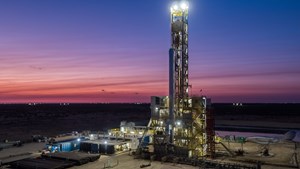Upstream M&A activity hits record $51 billion on backs of Permian shale megadeals, Enverus reports
(WO) — Enverus Intelligence Research (EIR), a subsidiary of Enverus, is releasing its summary of Q1 2024 upstream M&A activity. Following last year’s blockbuster $192 billion in U.S. upstream consolidation, Q1 2024 would be on track to surpass that record with $51 billion in announced deals.
“Deals at the start of 2024 were driven by the same factors that led to last year’s marathon of mergers, foremost among them a desire to lock up high-quality inventory when it is available,” said Andrew Dittmar, principal analyst at EIR.
“Most of that inventory is going to be found in the Permian, so it is unsurprising the prolific basin was yet again the primary driver for M&A within oil and gas.”
Headlining consolidation in Q1 was privately held Endeavor Energy Resources’ sale to publicly held Diamondback Energy. The $26 billion buyout was the largest sale of a private company Enverus has tracked.
Outmaneuvering larger rivals to secure Endeavor puts Diamondback in the front row among Permian-centric E&Ps, giving it a scale comparable to Pioneer Natural Resources prior to its sale to ExxonMobil. APA also expanded in the Permian, but via the public merger route with its purchase of smaller Callon Petroleum for $4.5 billion.
The acquisition significantly expands APA’s shale inventory, which previously lagged its peers as the company had balanced U.S. and international development. Those two deals, plus a few smaller bolt-on acquisitions, gave the Permian a 60% share of total transacted upstream value.
“Endeavor was a unique opportunity to acquire a legacy family-owned E&P with leases in the core of the Midland Basin acquired decades before Diamondback, or many of the other familiar shale names, were even in business,” said Dittmar.
“There are a handful of other private family companies like Mewbourne Oil and Fasken Oil & Ranch that would similarly be highly sought after if they entertained offers to sell. However, there are no indications these closely held companies are looking to exit any time soon. That leaves public E&Ps looking to scoop up the increasingly thin list of private E&Ps backed by institutional capital and built with a sale in mind — or figuring out ways to merge with each other.”
Continued public company consolidation does look to be the most likely route to keep M&A markets on track, both in the Permian and other plays. Haynesville saw significant consolidation with the merger of Chesapeake Energy and Southwestern Energy. Unlike most other public deals that were focused on extending the years of high-quality inventory, that transaction didn’t necessarily improve Chesapeake’s years of inventory life at the combined rig count but did substantially boost its exposure to the Haynesville and opportunity to capture premium gas prices from burgeoning LNG exports starting in 2025.
The Chesapeake deal is also one of several that is being subjected to additional scrutiny from the Federal Trade Commission (FTC), along with Exxon’s purchase of Pioneer and Chevron’s acquisition of Hess.
“The heightened review is a function both of an FTC that is increasingly active in anti-trust enforcement and a growing concentration of ownership of the key U.S. unconventional plays,” said Dittmar. “Ultimately, the most likely outcome is all these deals get approved but federal regulatory oversight may pose a headwind to additional consolidation within a single play. That may force buyers to broaden their focus by acquiring assets in multiple plays.”
Beyond just concerns about regulatory review, companies are likely to be looking beyond the Permian for M&A opportunities because of both higher fragmentation in other plays and lower prices.
The Eagle Ford and SCOOP | STACK are two plays with proportionally higher ownership by private equity-backed E&Ps likely to welcome an offer to be acquired by a public company. Both plays are also interesting from a commodity diversification perspective, with a mix of oil and gas production and an opportunity to capitalize on an eventual gas price recovery. The Eagle Ford has a gas window well positioned to supply Gulf Coast LNG projects, albeit with a smaller total resource base relative to the Haynesville.
Assets on the Gulf Coast, whether in the Eagle Ford or Haynesville, could also see a further influx of interest from buyers based outside the U.S. Already, these plays have seen major acquisitions by Canada’s Baytex Energy, United Kingdom-based INEOS and Japan’s Tokyo Gas, as well as a smaller non-operated purchase by Total.
“BP would be a potential candidate to expand in either the Haynesville or the Eagle Ford,” said Dittmar. “The company has maintained a presence in both plays and could look to boost U.S. unconventional exposure to keep pace with U.S. peers Exxon and Chevron.”
The last piece of the evolving M&A landscape is private companies taking the opportunity to reload portfolios after heavy selling to public E&Ps. Traditionally, a wave of corporate consolidation like the market has recently seen would lead to a surge of non-core sales as companies combed through combined portfolios to sell assets not slated for near-term development. However, with balance sheets healthy and inventory at a premium, non-core sales may be minimal.
“Opportunities are still there for private equity, but they may need to get more creative,” said Dittmar. “That could include exploring more secondary targets like deep intervals in the Permian or pushing into areas like the Central Basin Platform. Ultimately, that is good for the industry, as private equity with a higher tolerance for risk compared to public companies has played a key role in finding additional resource. That is something we will need as the core shale plays continue to mature.”



